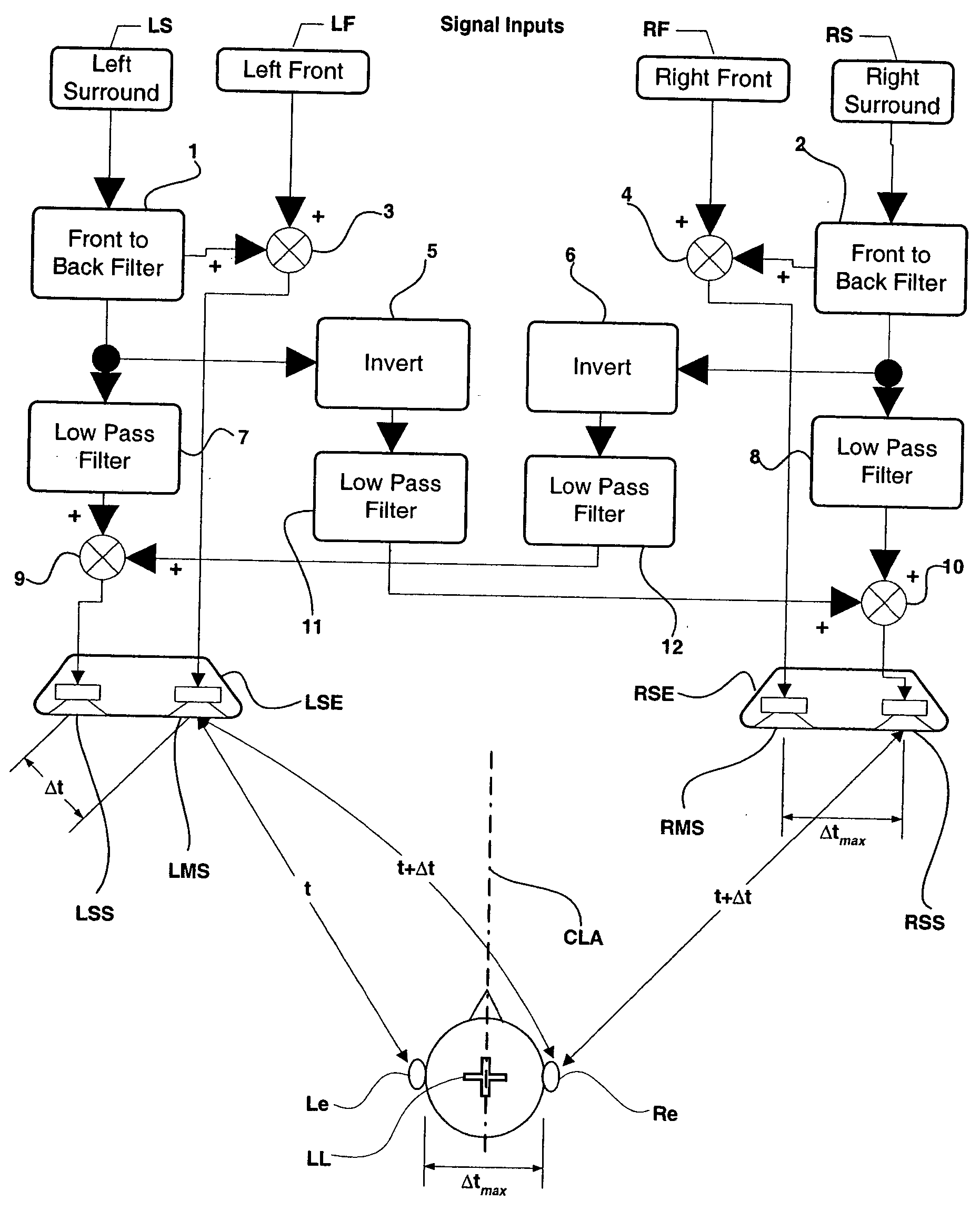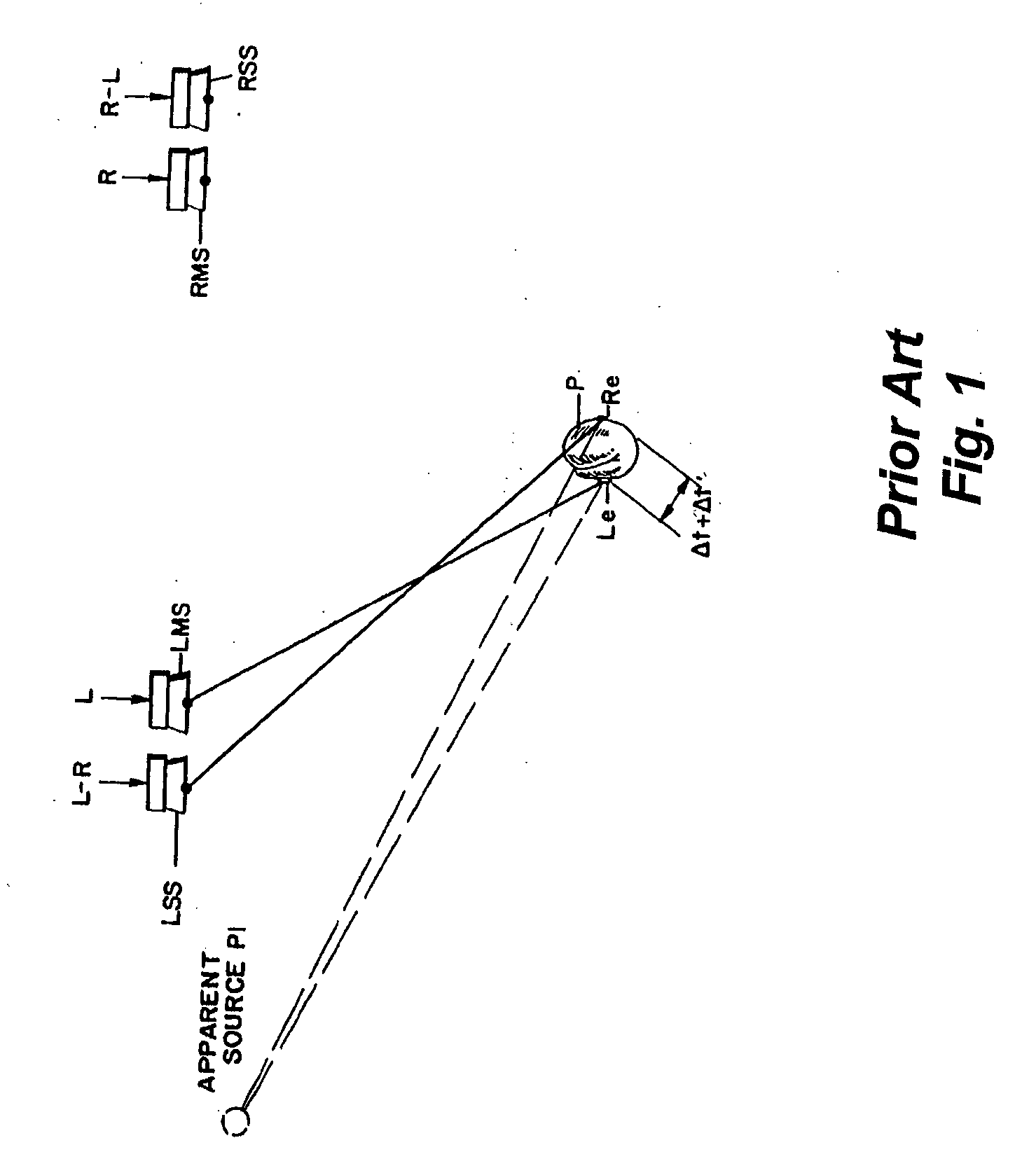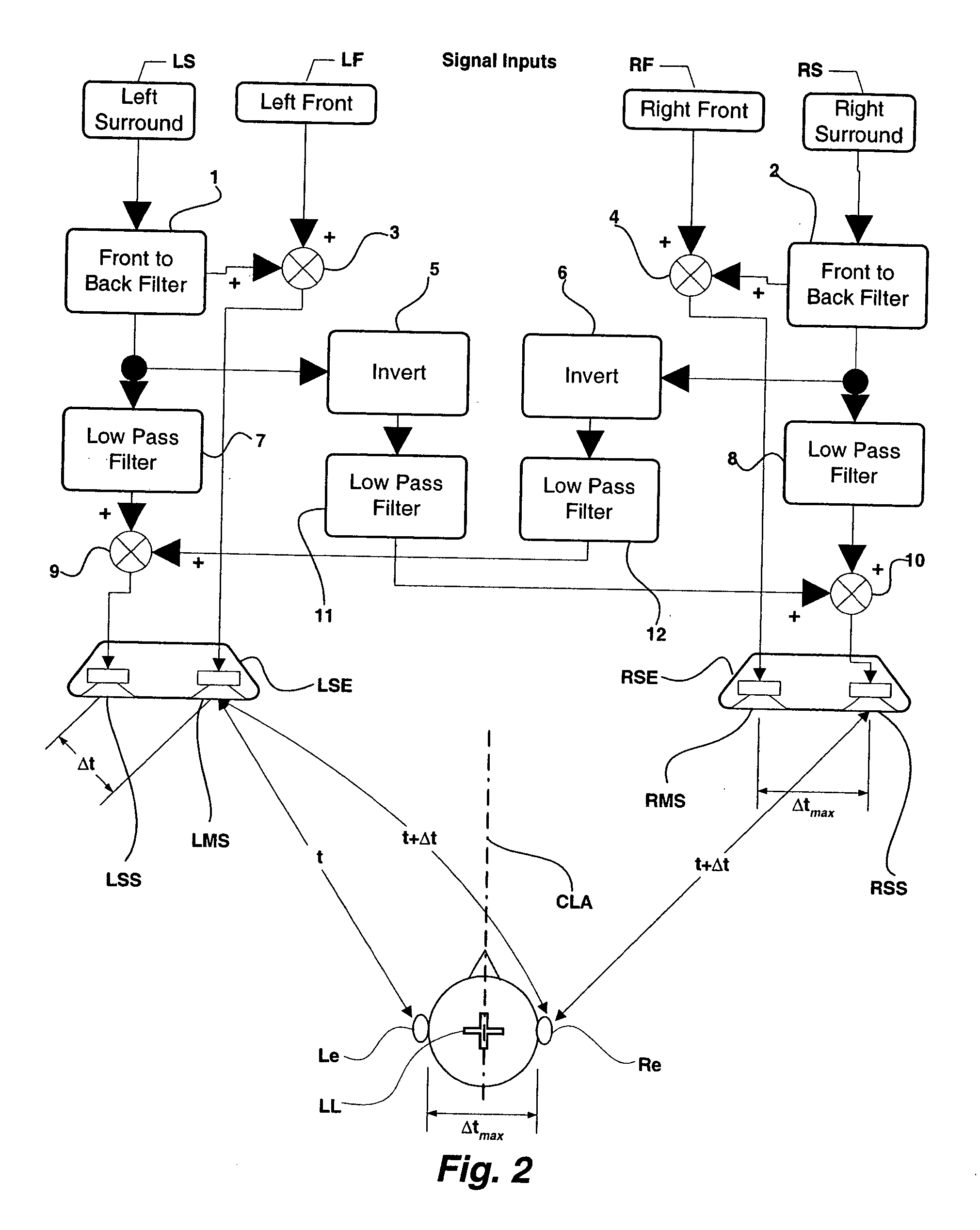Multi-channel audio surround sound from front located loudspeakers
a loudspeaker and multi-channel technology, applied in the direction of stereophonic systems, stereophonic arrangments, electrical apparatus, etc., can solve the problems of complex frequency response pattern, difficult and costly production of phantom sound sources at specific locations, and complex frequency response components of hrtf's
- Summary
- Abstract
- Description
- Claims
- Application Information
AI Technical Summary
Benefits of technology
Problems solved by technology
Method used
Image
Examples
first embodiment
[0050] Therefore, in this first embodiment the front-to-back filters 1 and 2 of FIG. 2 may have characteristics which limit the frequency range to below approximately 2,500 Hz and which have approximately the frequency response of the curve labeled “45-135 deg.” in FIG. 4 for frequencies below approximately 2,500 Hz. As noted above and as shown in FIG. 6, because front-to-back frequency response curves are very similar below approximately 2,500 Hz over a range of angular locations and for both near and farthest ear, even if the speakers are not located at exactly 45 degrees from the central listening axis CLA, the front-to-back filters 1 and 2 will still cause the listener to perceive that sounds,are coming from mirror image locations behind the listener, as shown in FIG. 7. Notwithstanding the foregoing discussion, experiments have shown that in some implementations of the present invention it is desirable for the frequency response of front-to-back filters 1 and 2 to extend substa...
second embodiment
[0056]FIG. 9 shows a family of curves calculated by subtracting the frequency response shown in FIG. 3 for sounds arriving from a particular direction at the listener's nearest ear from the frequency response for sounds arriving from the same direction at the listener's farthest ear. Therefore, these curves represent the change in frequency response of a sound as it passes across the listener's head from left to right or right to left. By inspection of FIG. 9 it can be seen that these curves are similar in shape and magnitude up to a frequency of approximately 2,000 Hz. Referring again to this second embodiment of the present invention as shown in FIG.10, left-right filter 13 may have approximately the characteristics of, for example, the curve of FIG. 9 labeled, “45 to −45”. Thus, the inverted and low-passed left surround signal produced by right sub-speaker RSS for the purpose of canceling IAC will better match the frequency response of the in-phase left surround signal produced b...
fifth embodiment
[0059] the present invention is shown in FIG. 13 and FIG. 13a. This embodiment of the present invention is similar to the first embodiment described with respect to FIG. 2, except that left and right front signals LF and RF are applied to the left and right sub speakers LSS and RSS through certain filters and signal manipulations so as to cancel IAC and create an expanded range of perceived front sound locations in addition to the perceived range of rear sound locations previously discussed in the first embodiment. Referring to FIG. 13, left front signal LF is combined with left surround signal LS by adder 3 after left surround signal LS has been modified by front-to-back filter 1. Similarly, right front signal RF is combined with right surround signal RS by adder 4 after right surround signal RS has been modified by front-to-back filter 2. The combination of left front signal LF and modified left surround signal LS is transmitted to left main speaker LMS and is also subtracted from...
PUM
 Login to View More
Login to View More Abstract
Description
Claims
Application Information
 Login to View More
Login to View More - R&D
- Intellectual Property
- Life Sciences
- Materials
- Tech Scout
- Unparalleled Data Quality
- Higher Quality Content
- 60% Fewer Hallucinations
Browse by: Latest US Patents, China's latest patents, Technical Efficacy Thesaurus, Application Domain, Technology Topic, Popular Technical Reports.
© 2025 PatSnap. All rights reserved.Legal|Privacy policy|Modern Slavery Act Transparency Statement|Sitemap|About US| Contact US: help@patsnap.com



